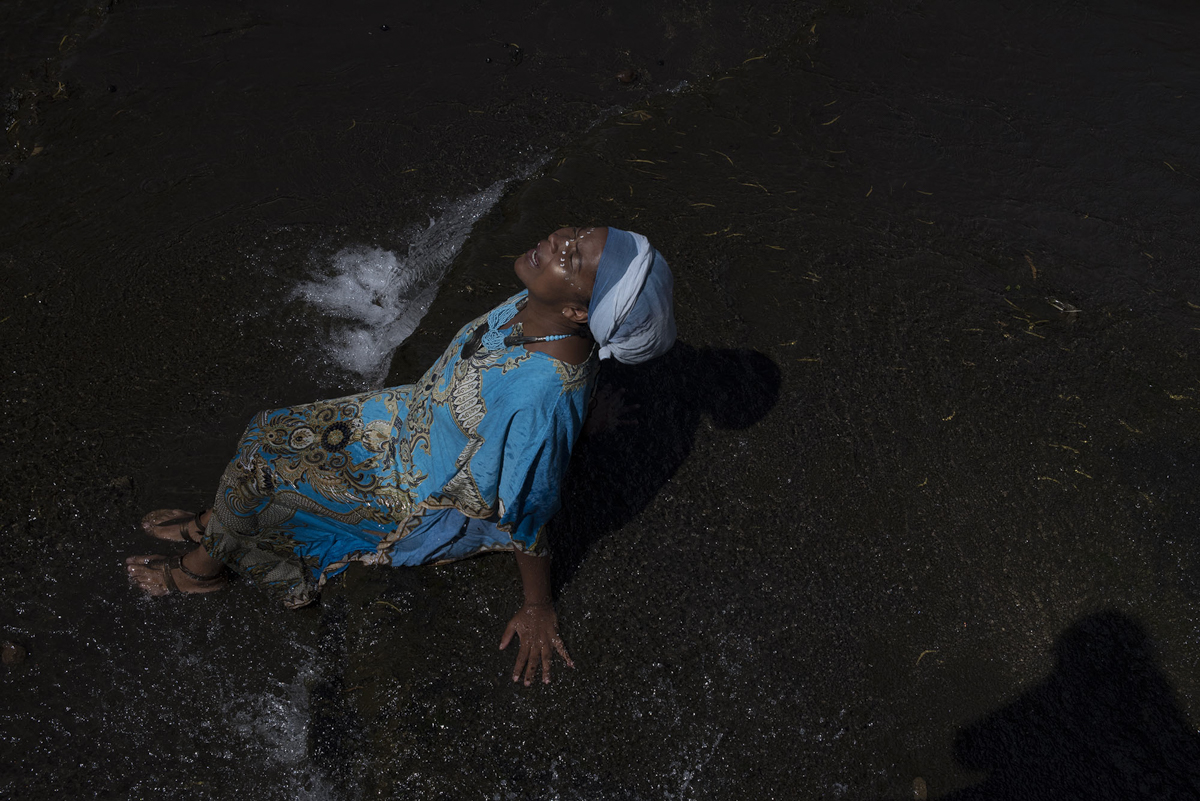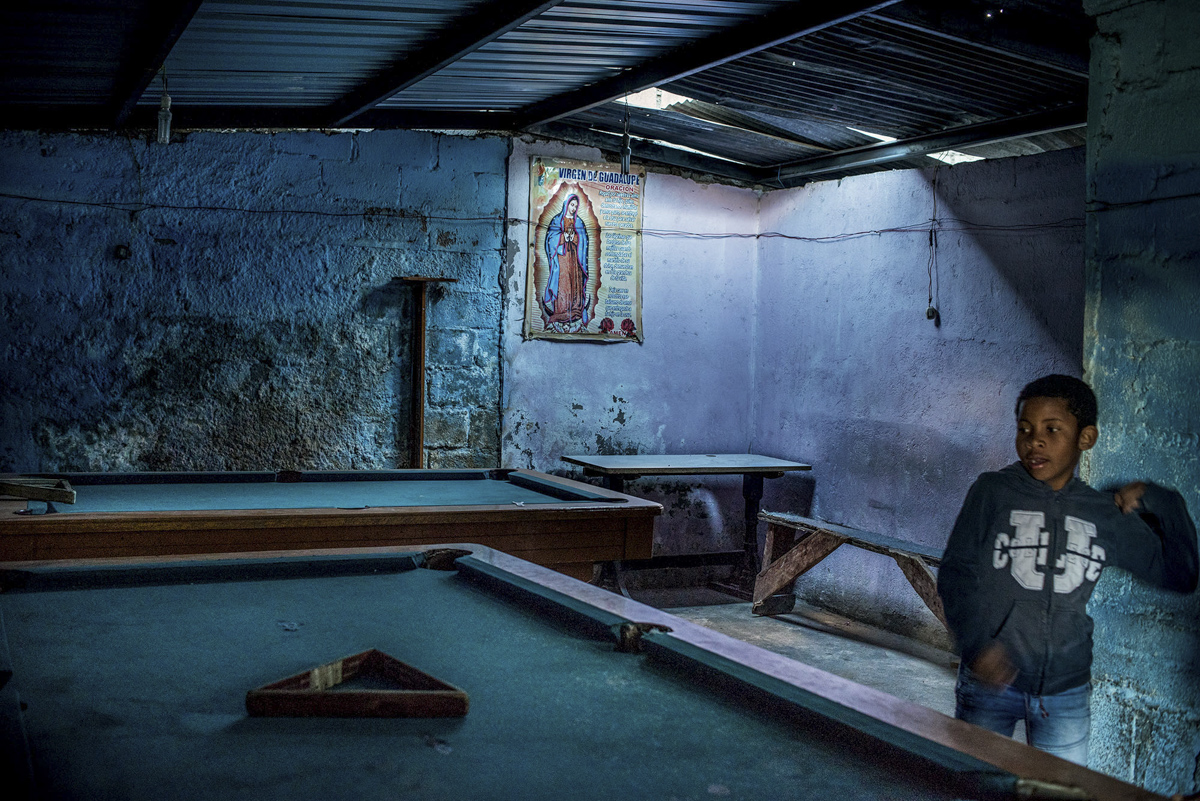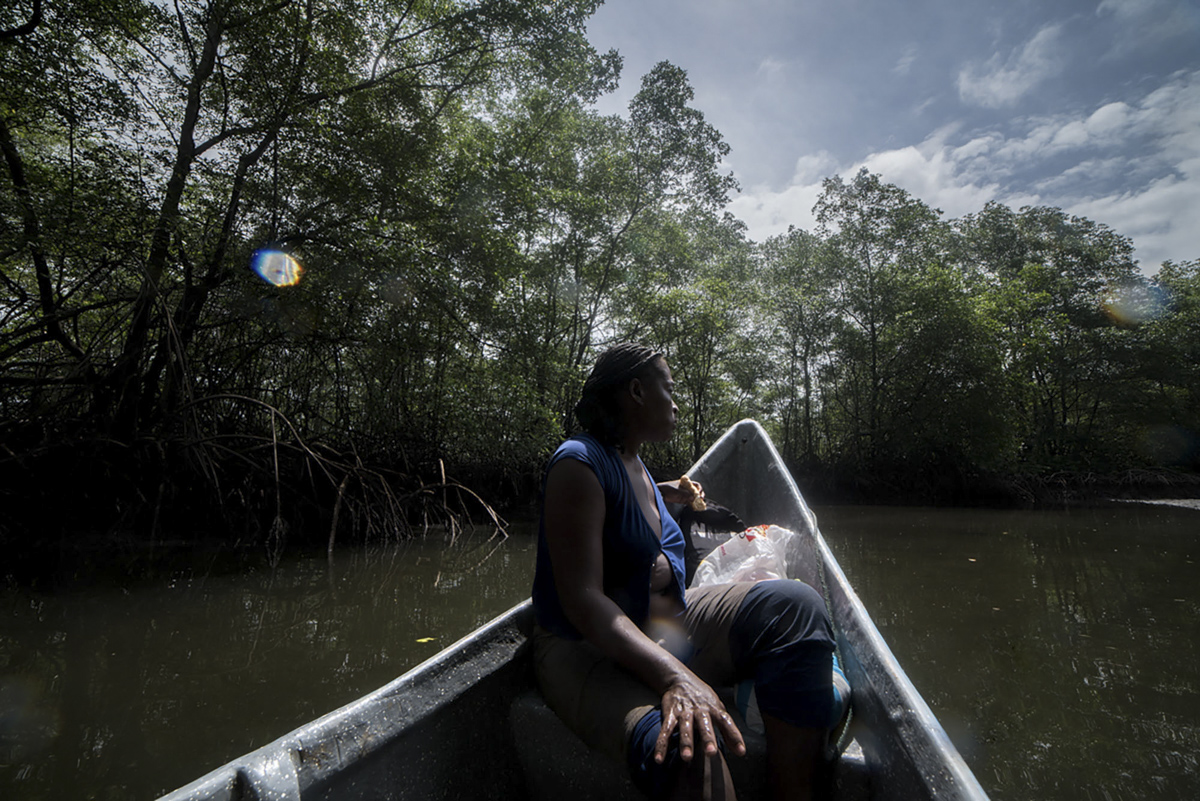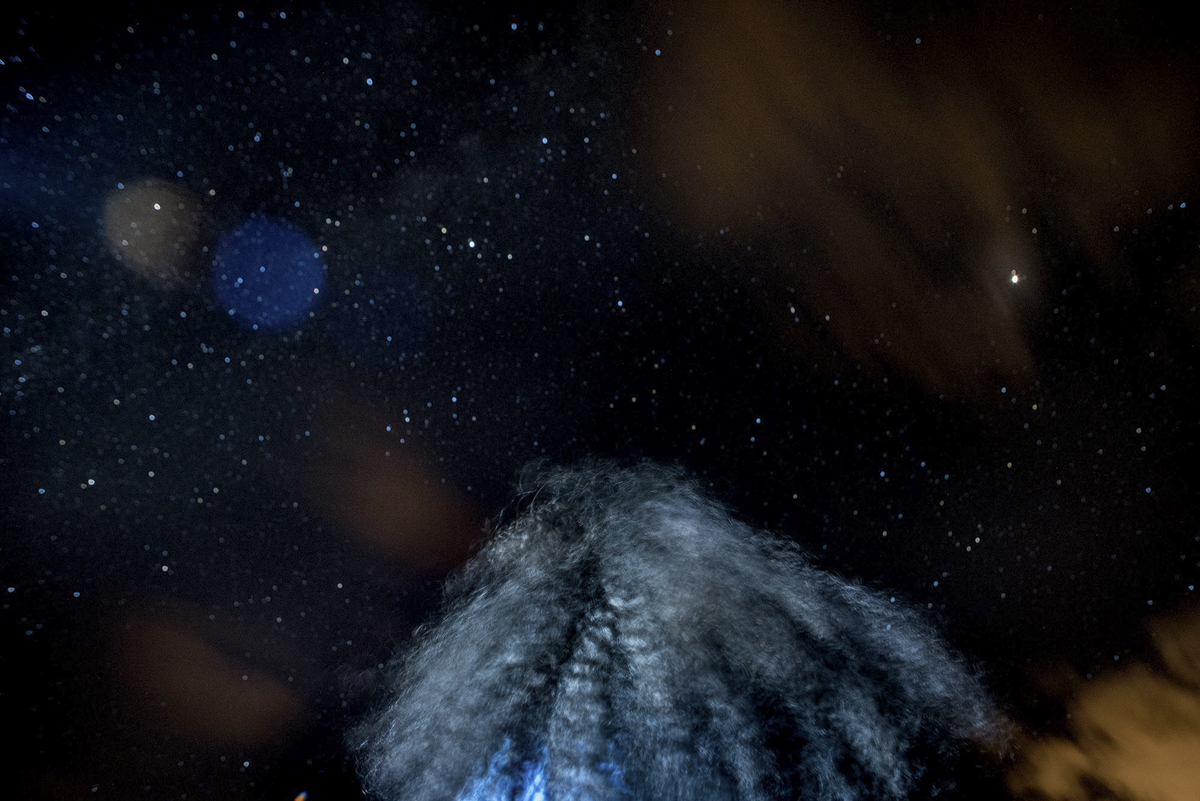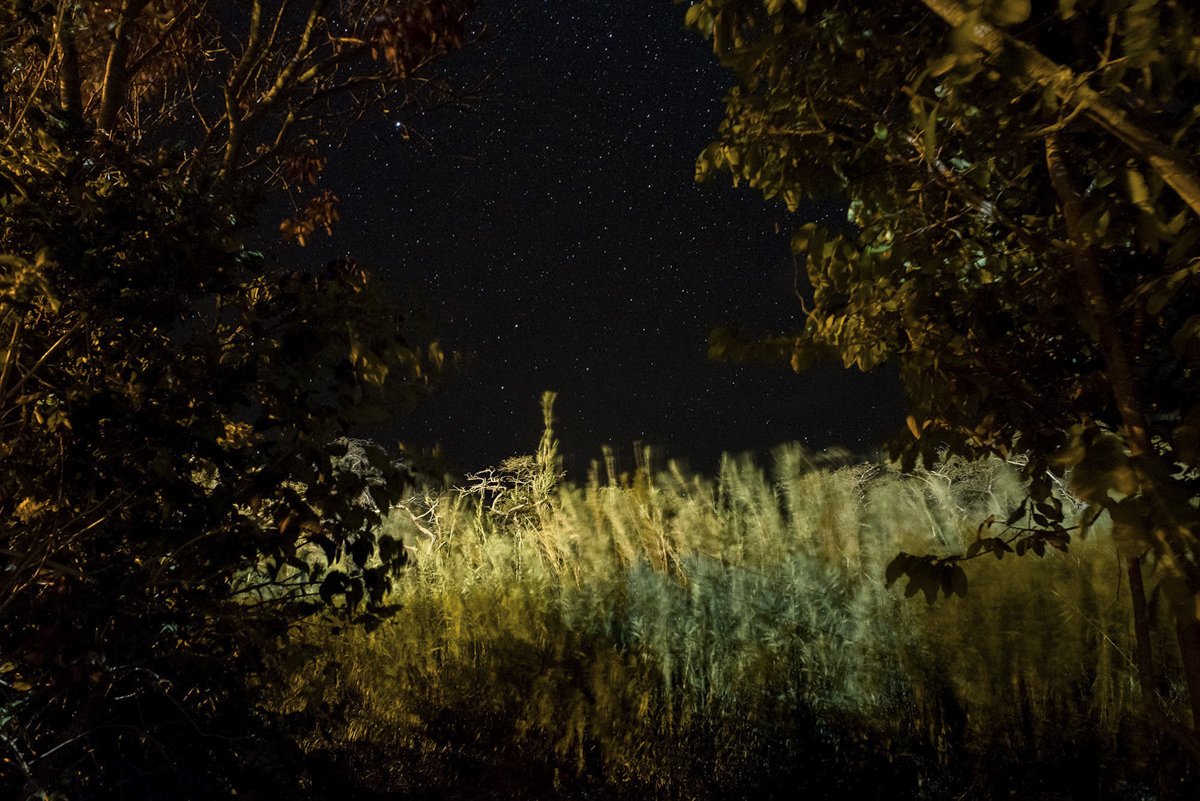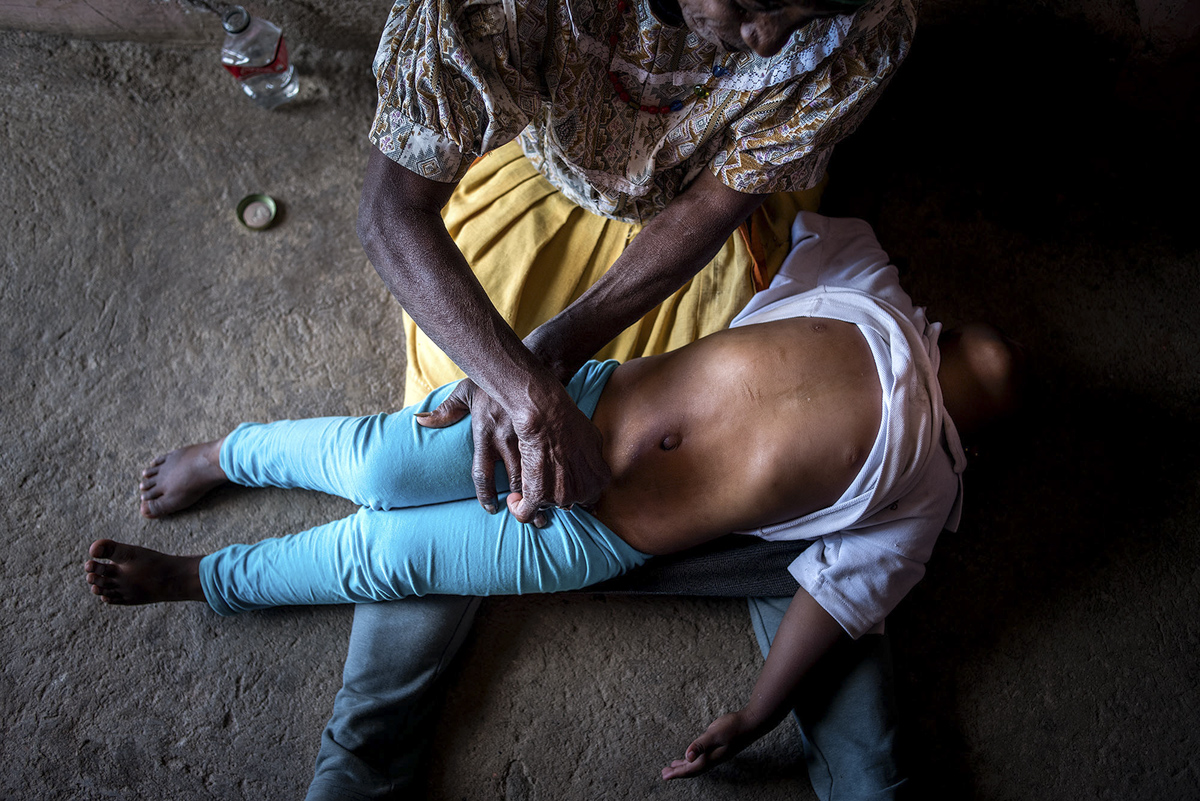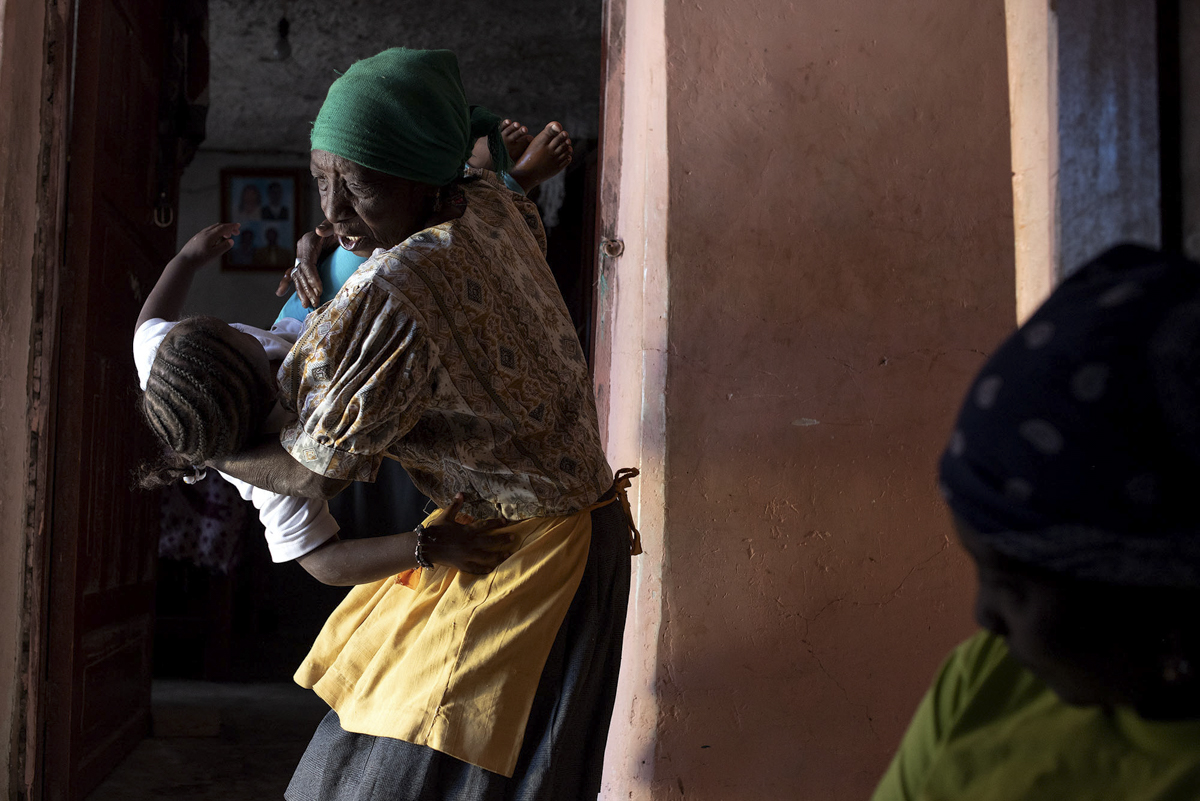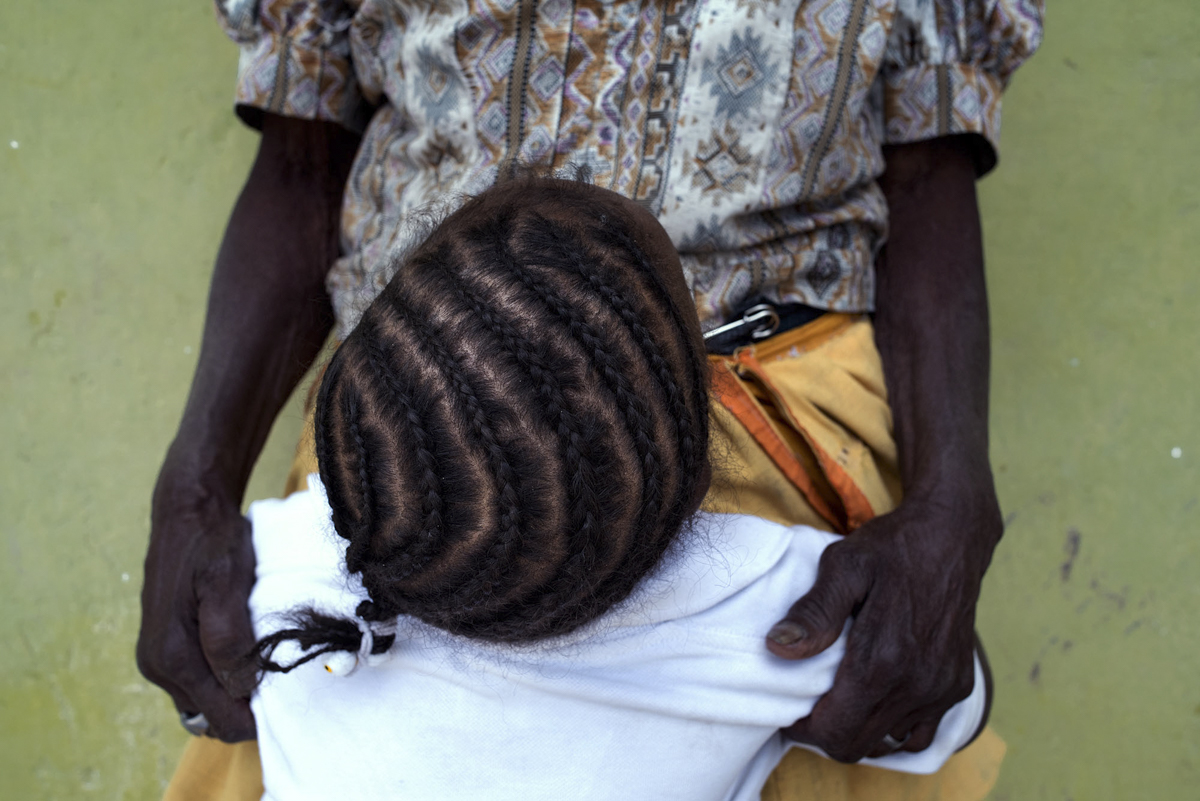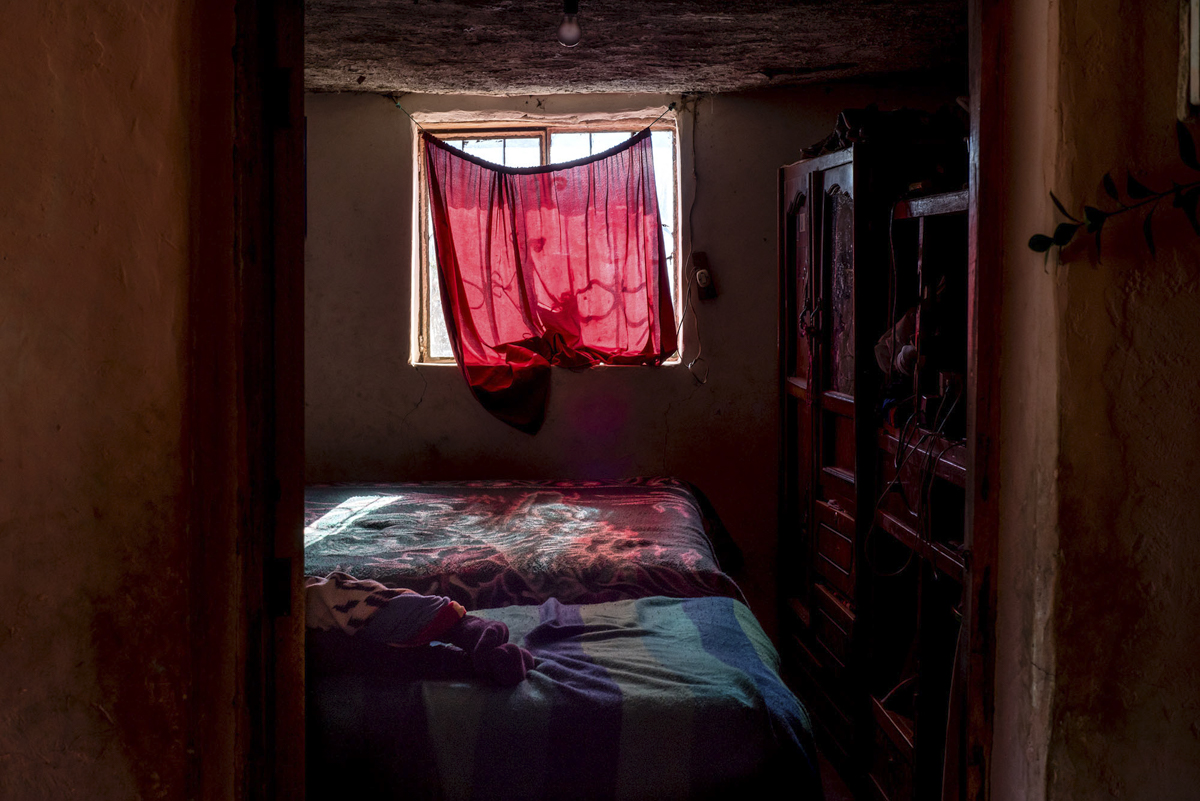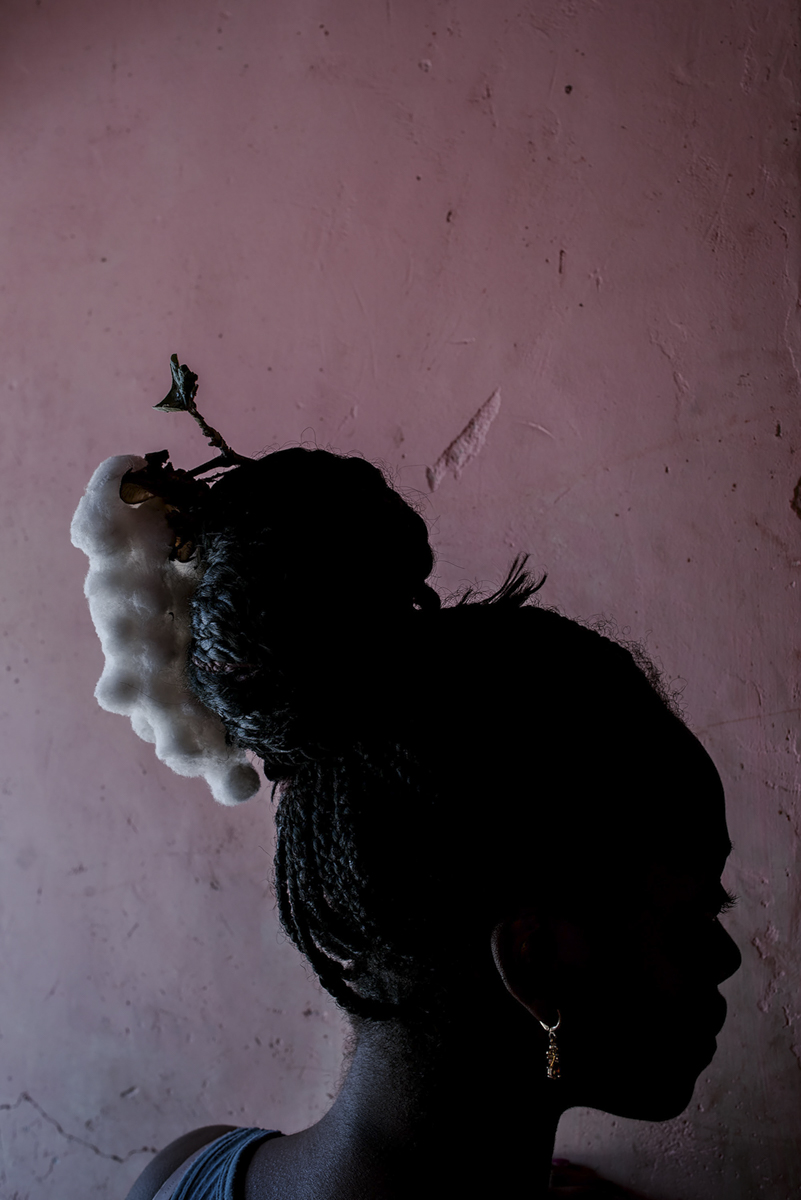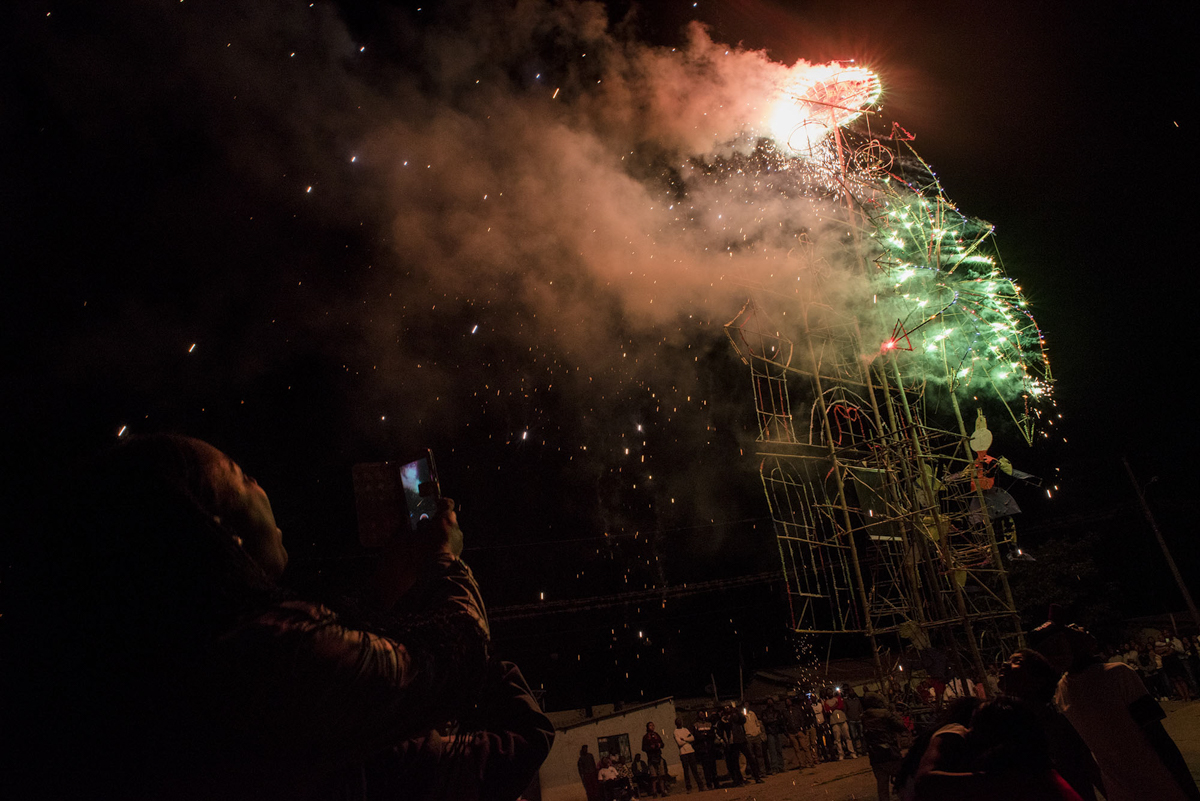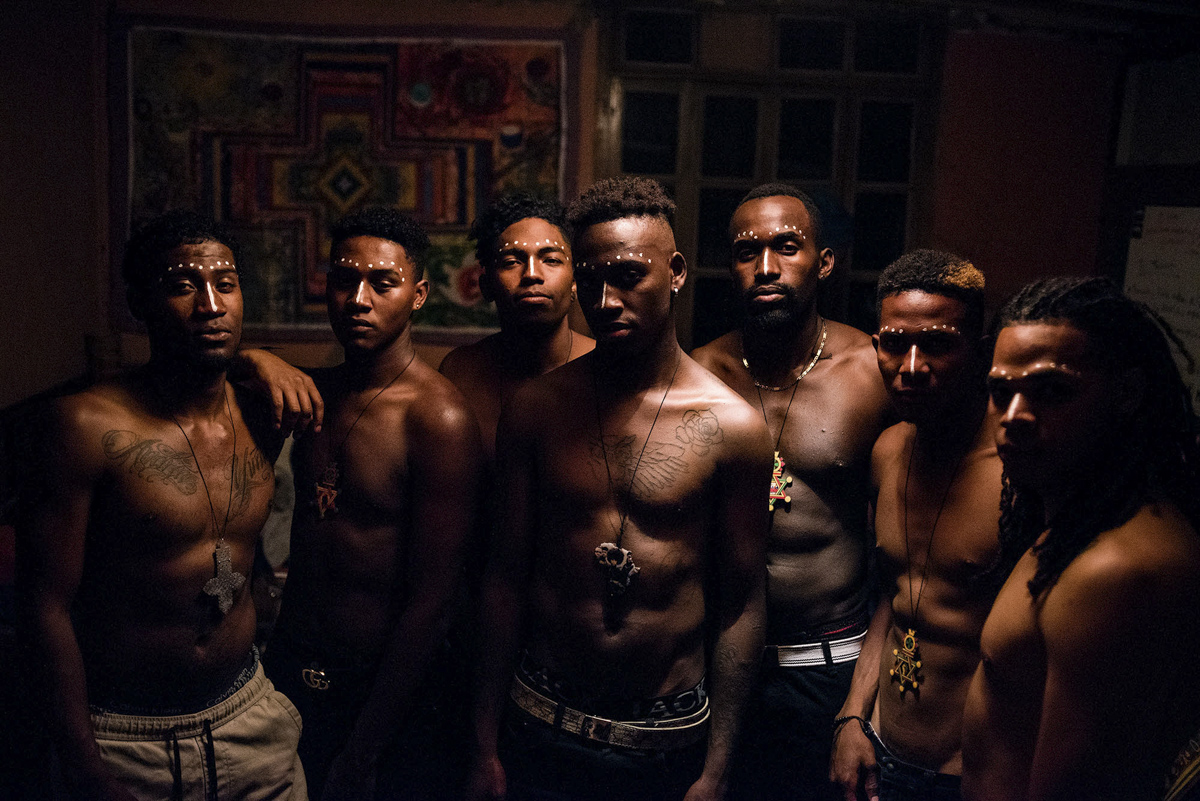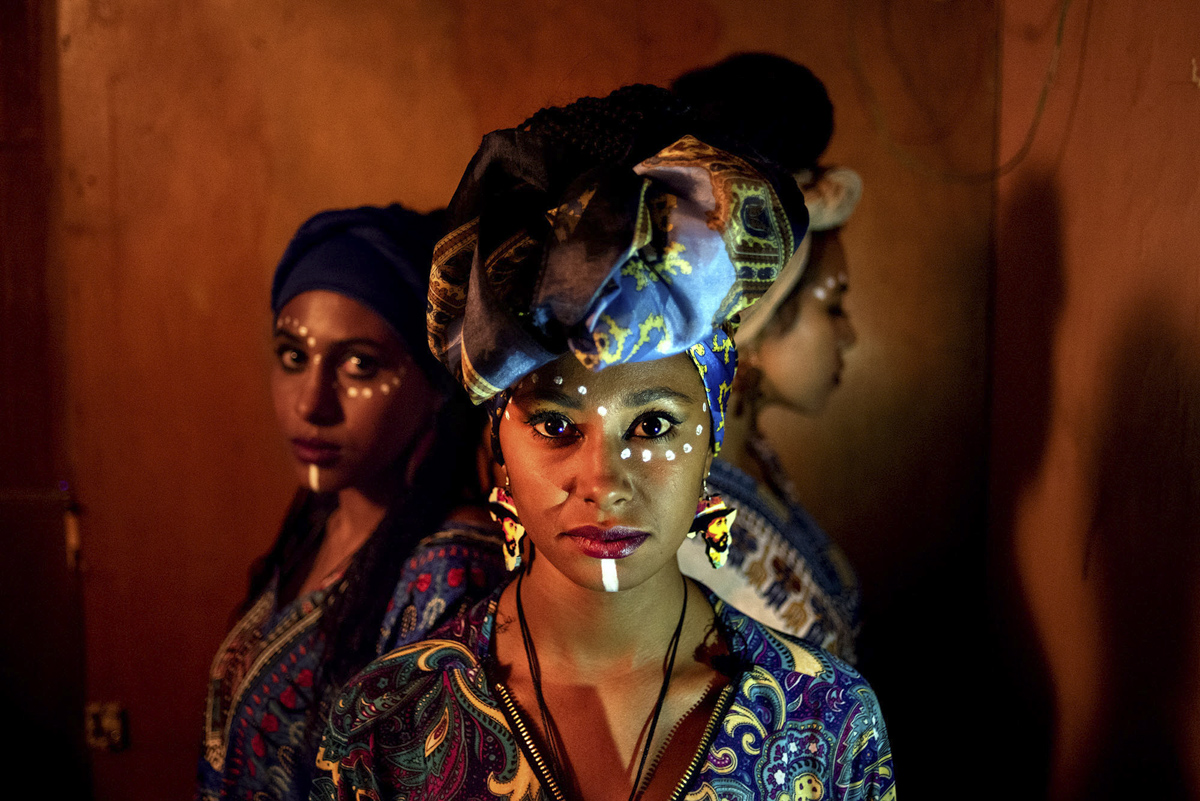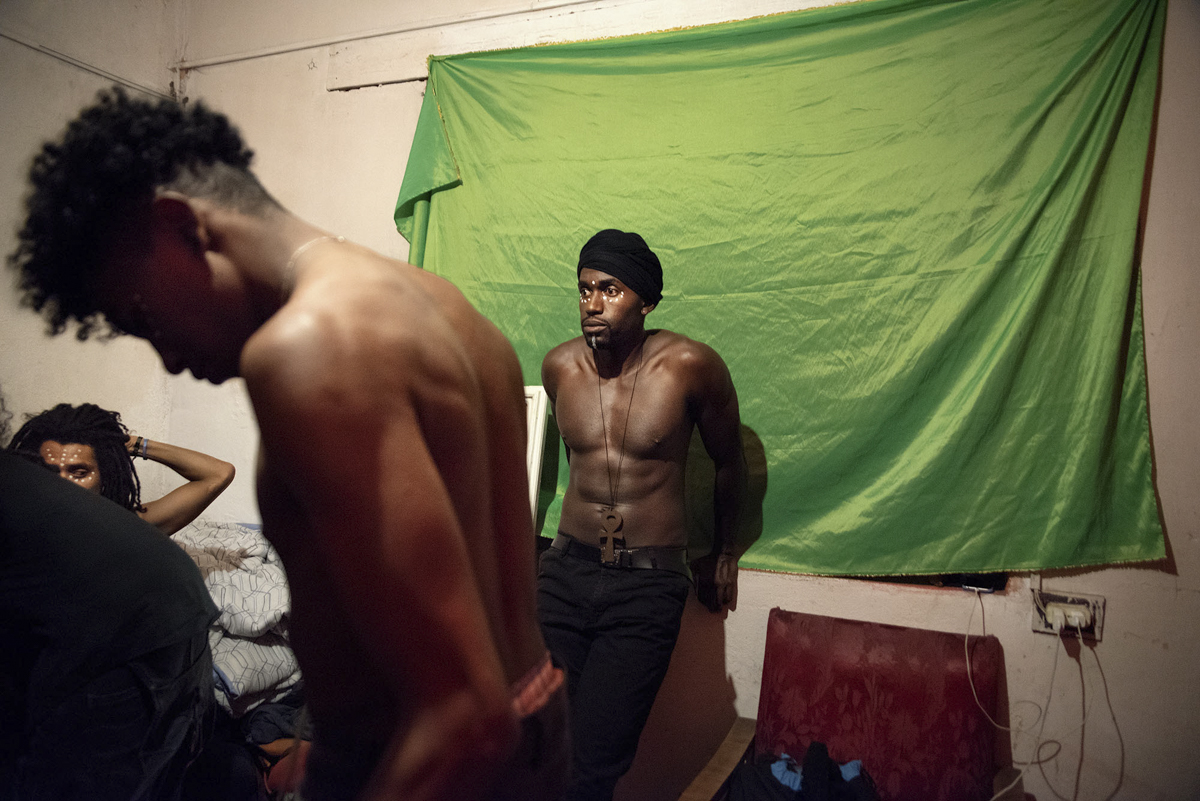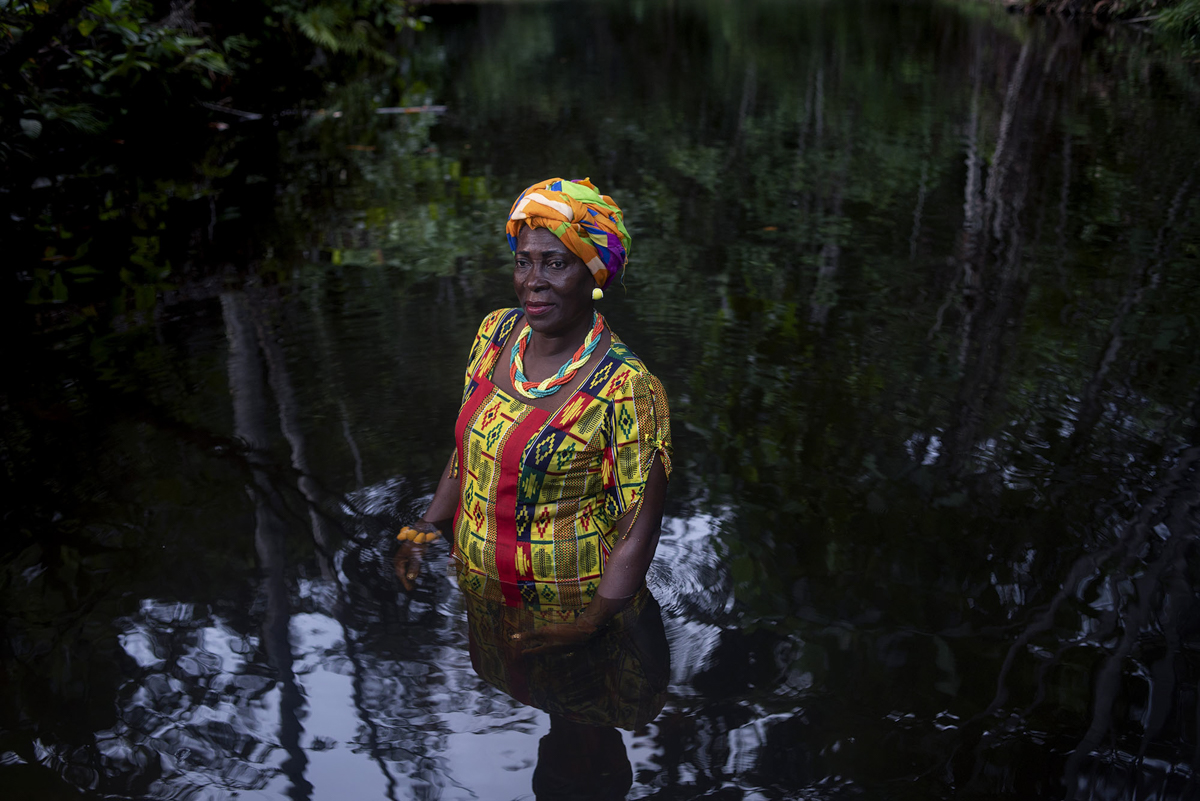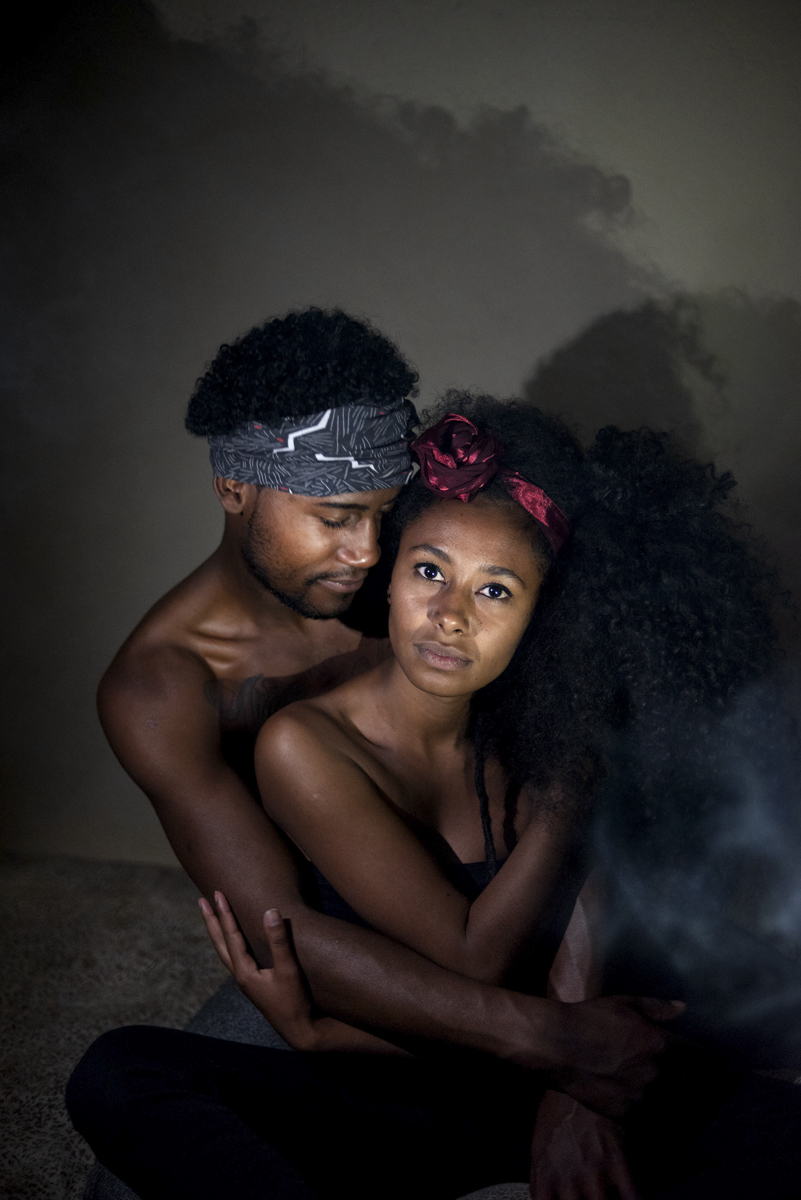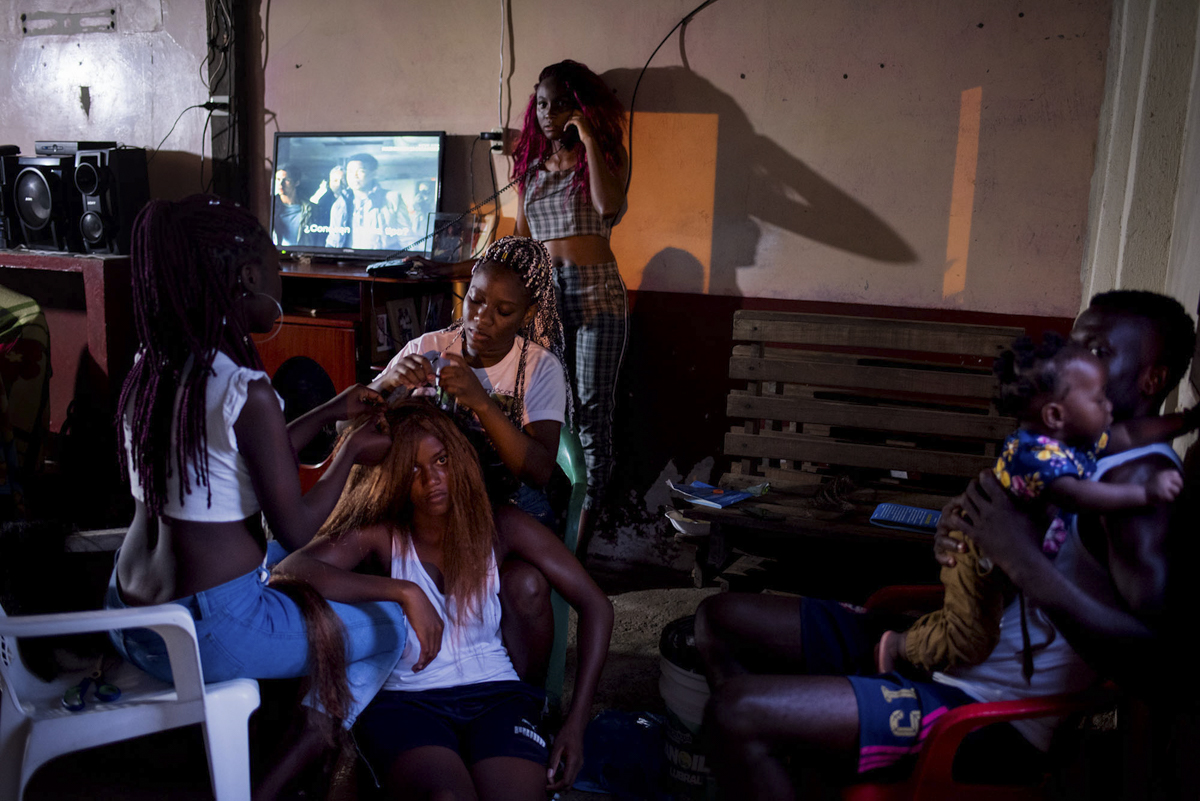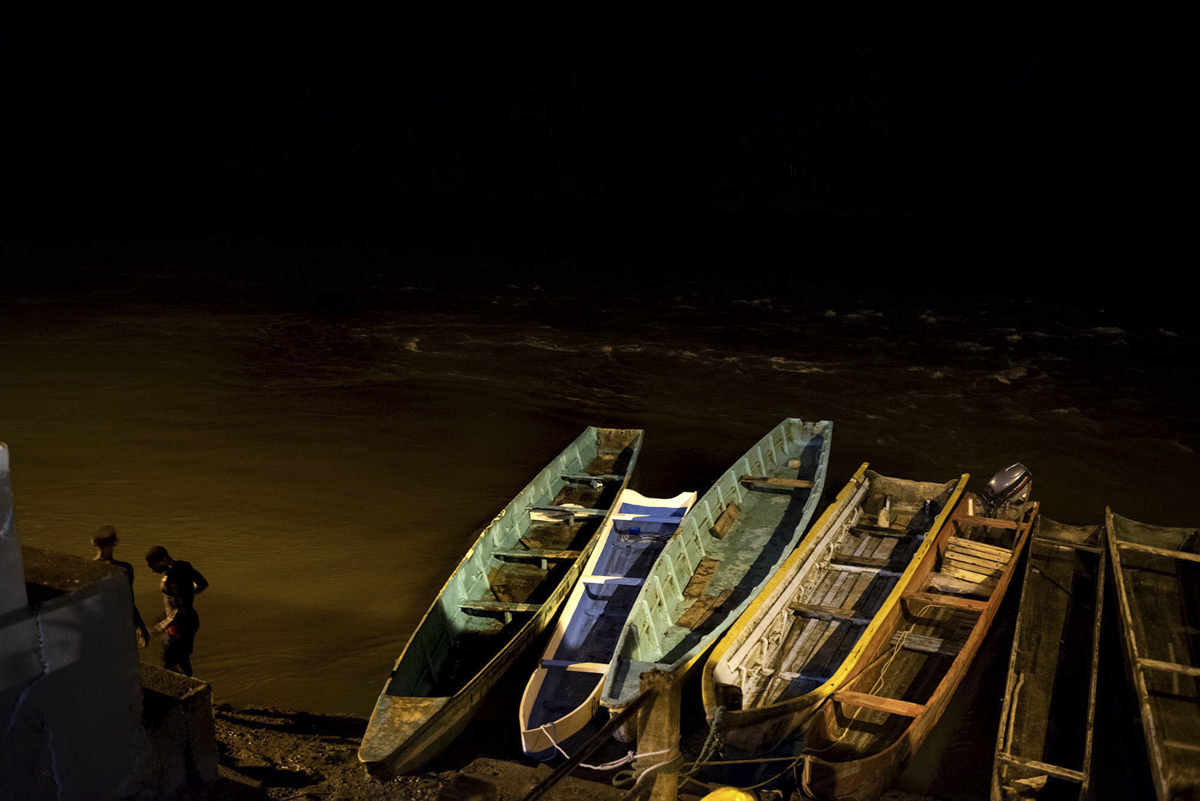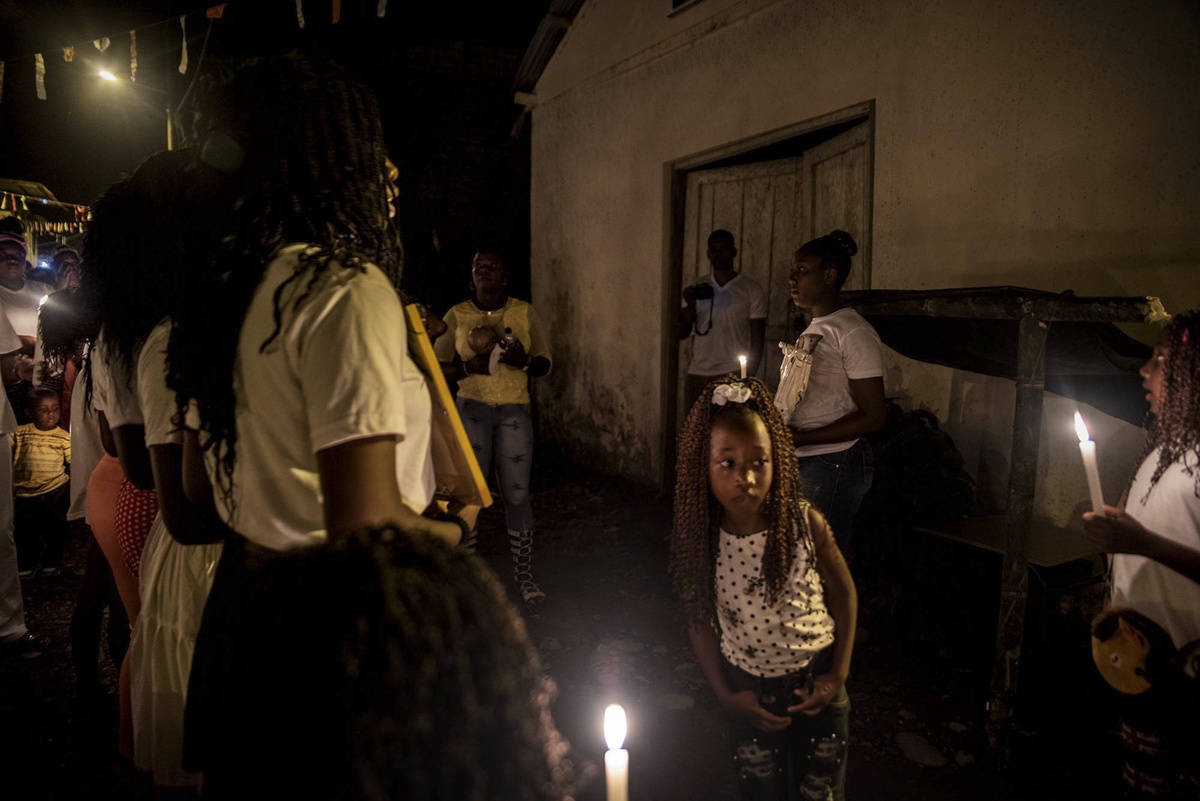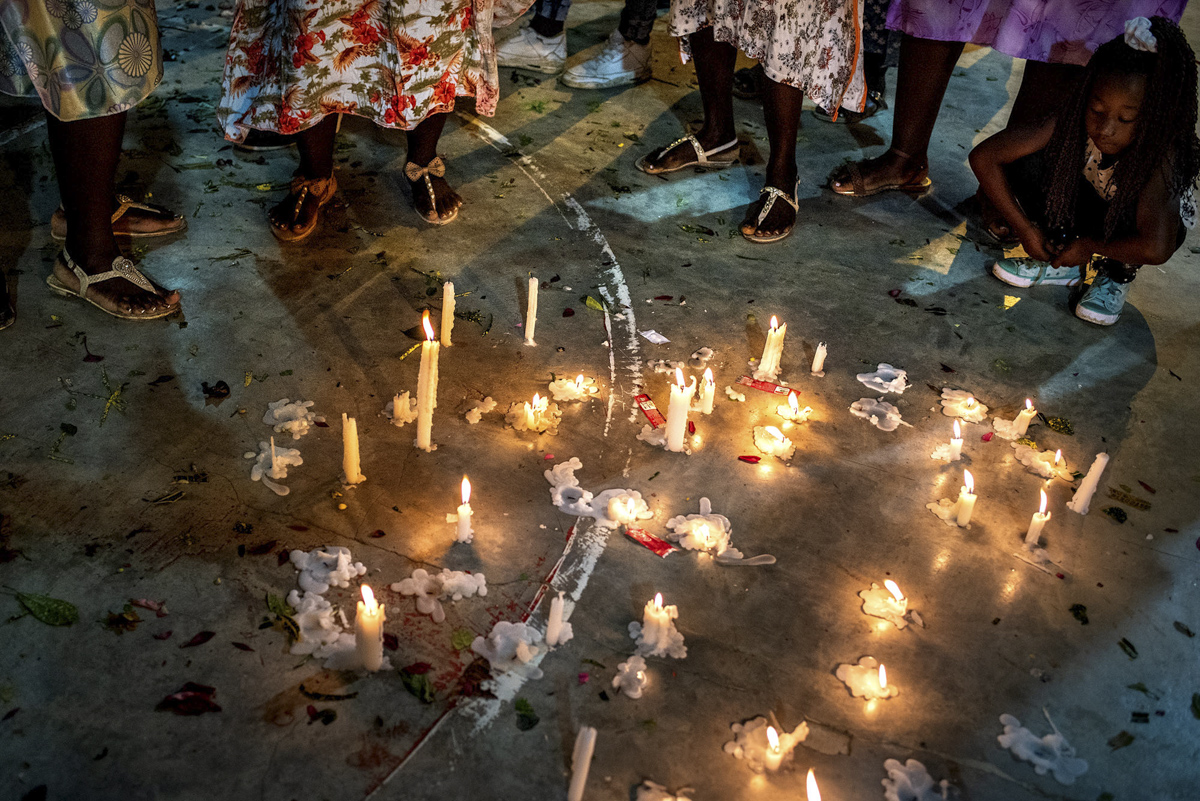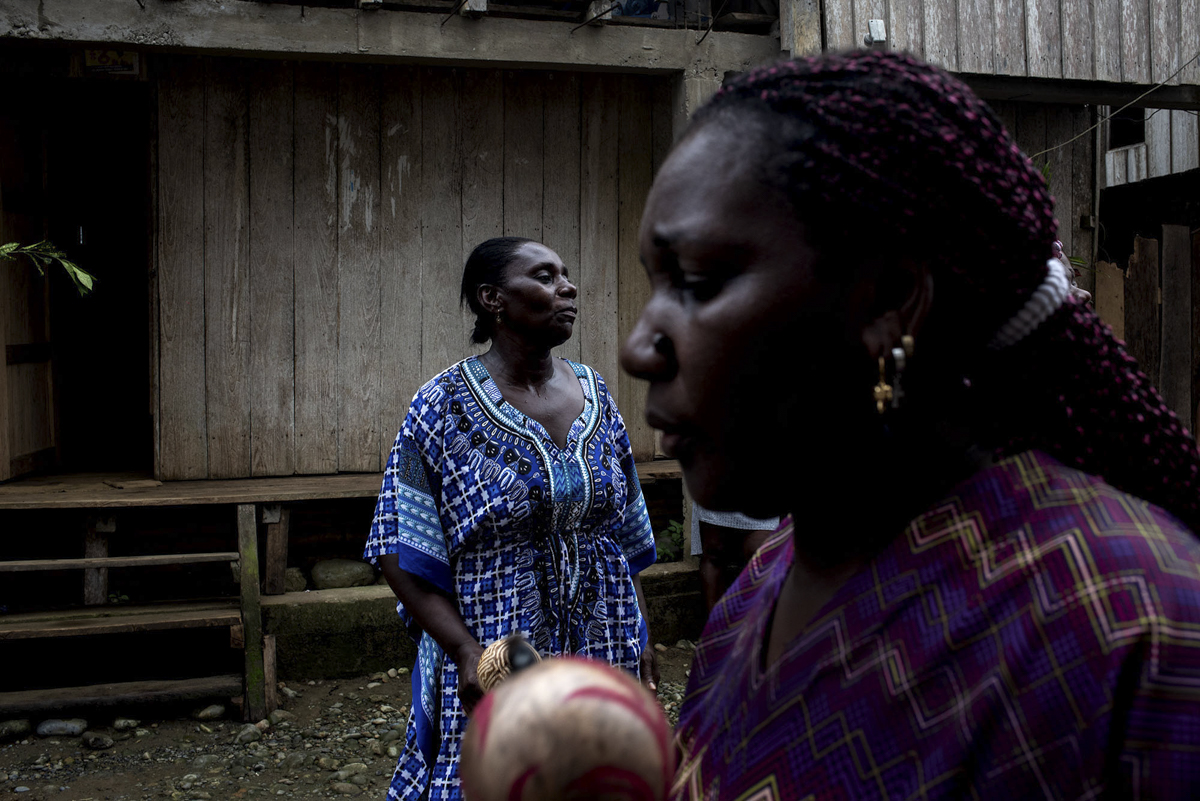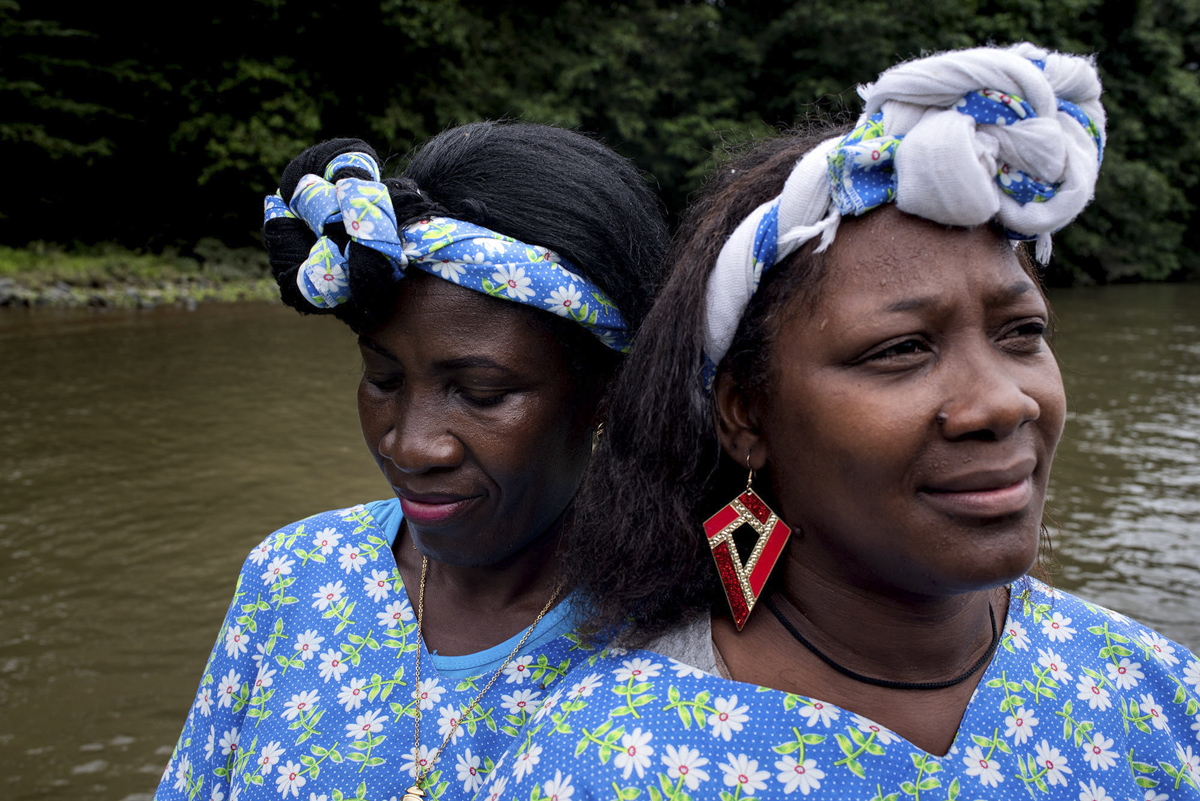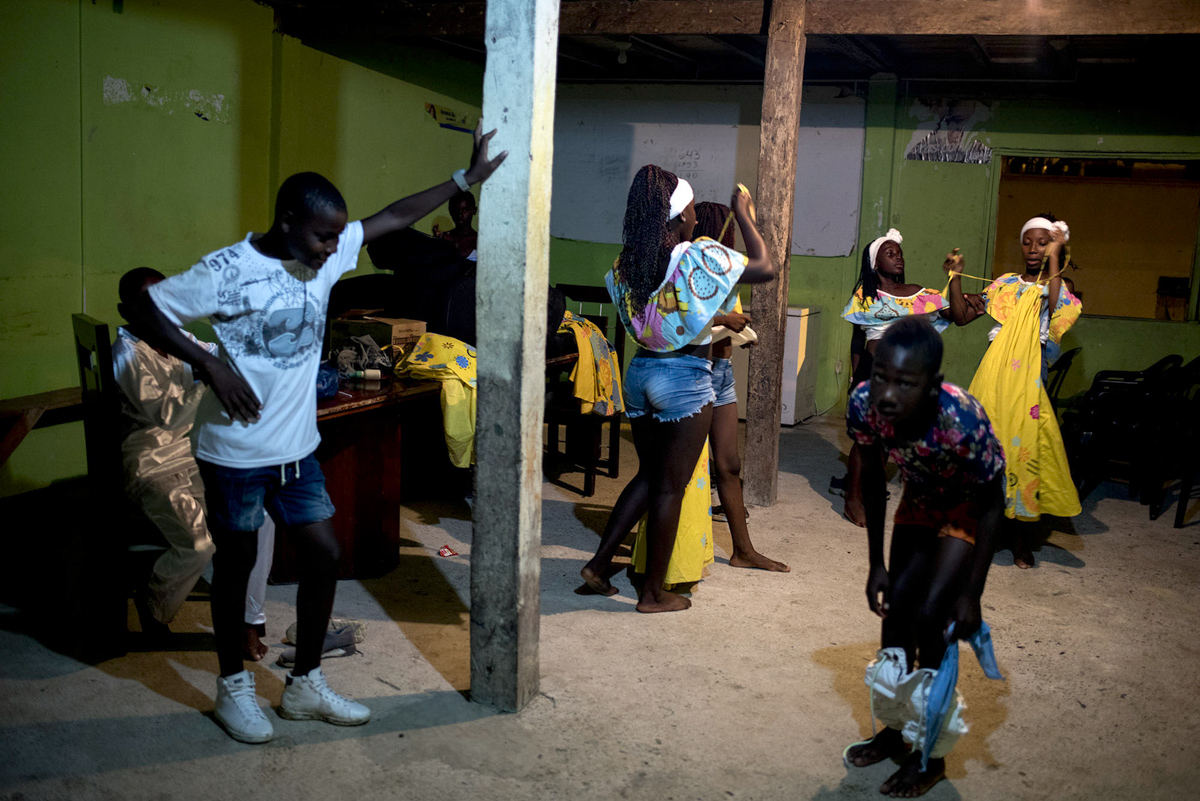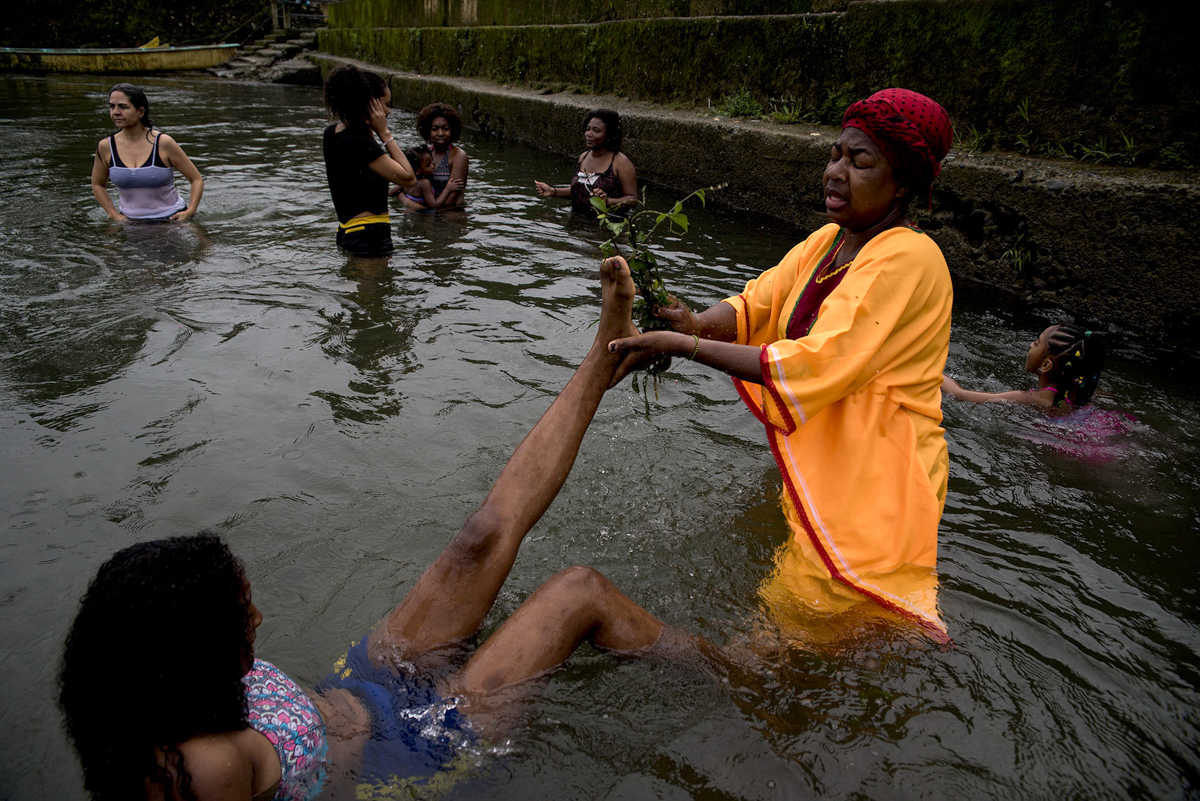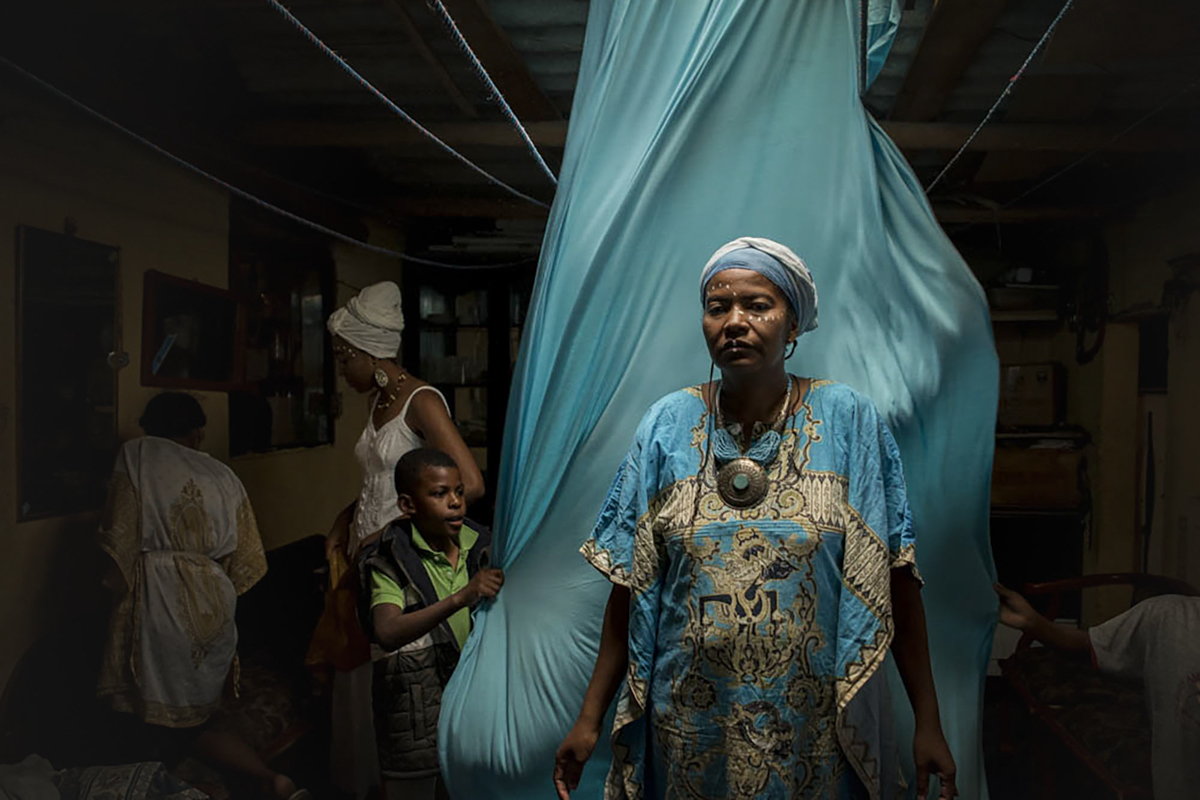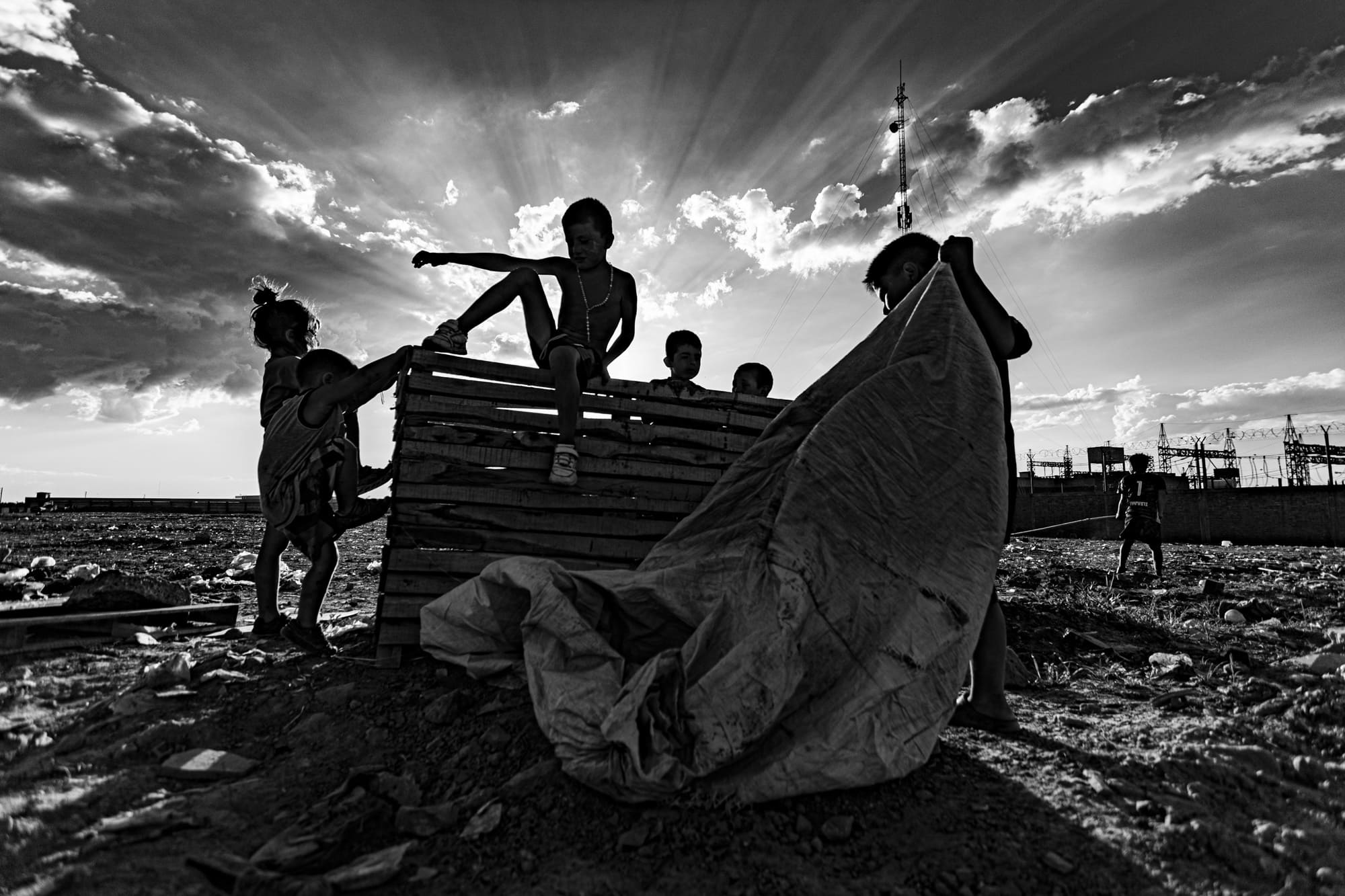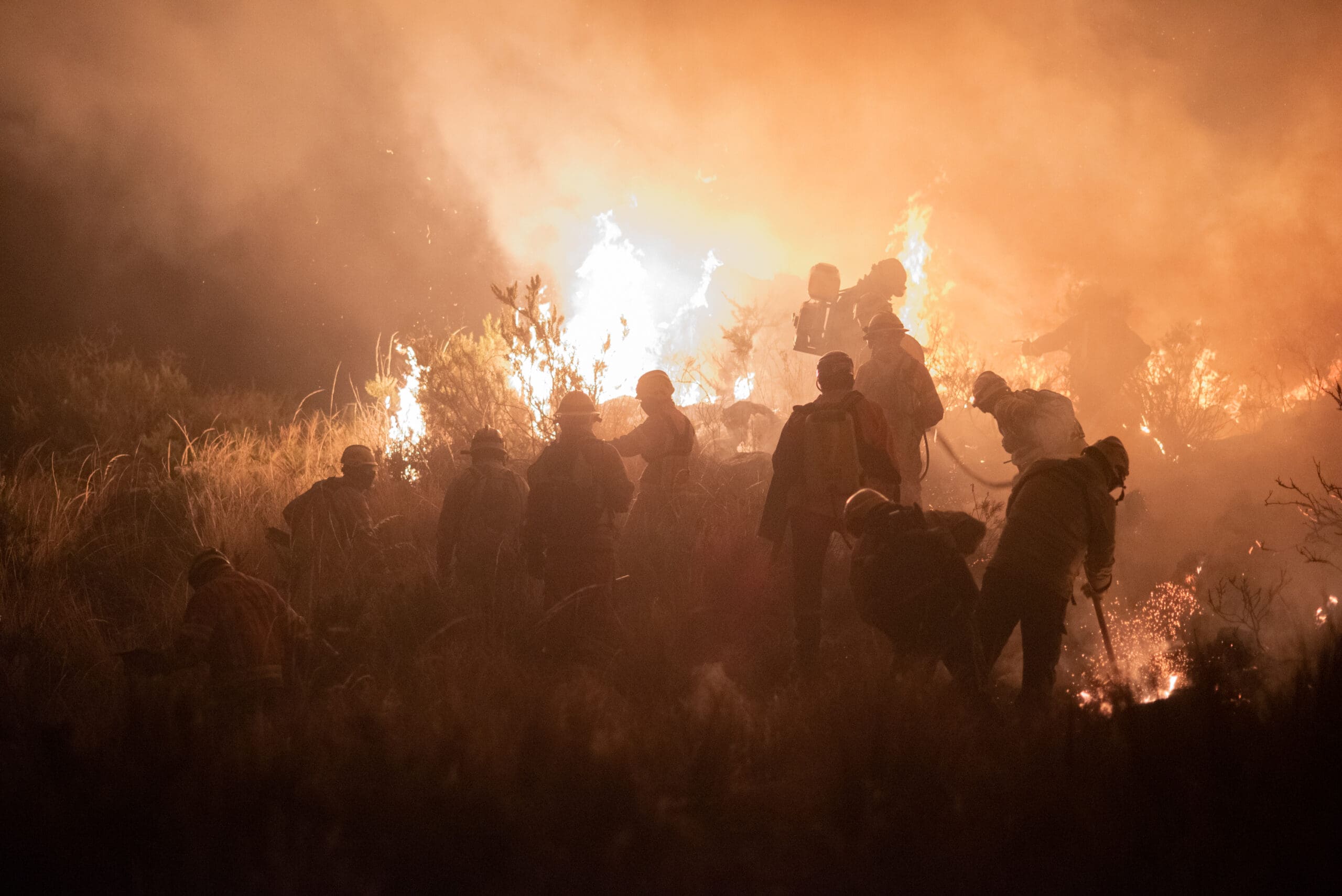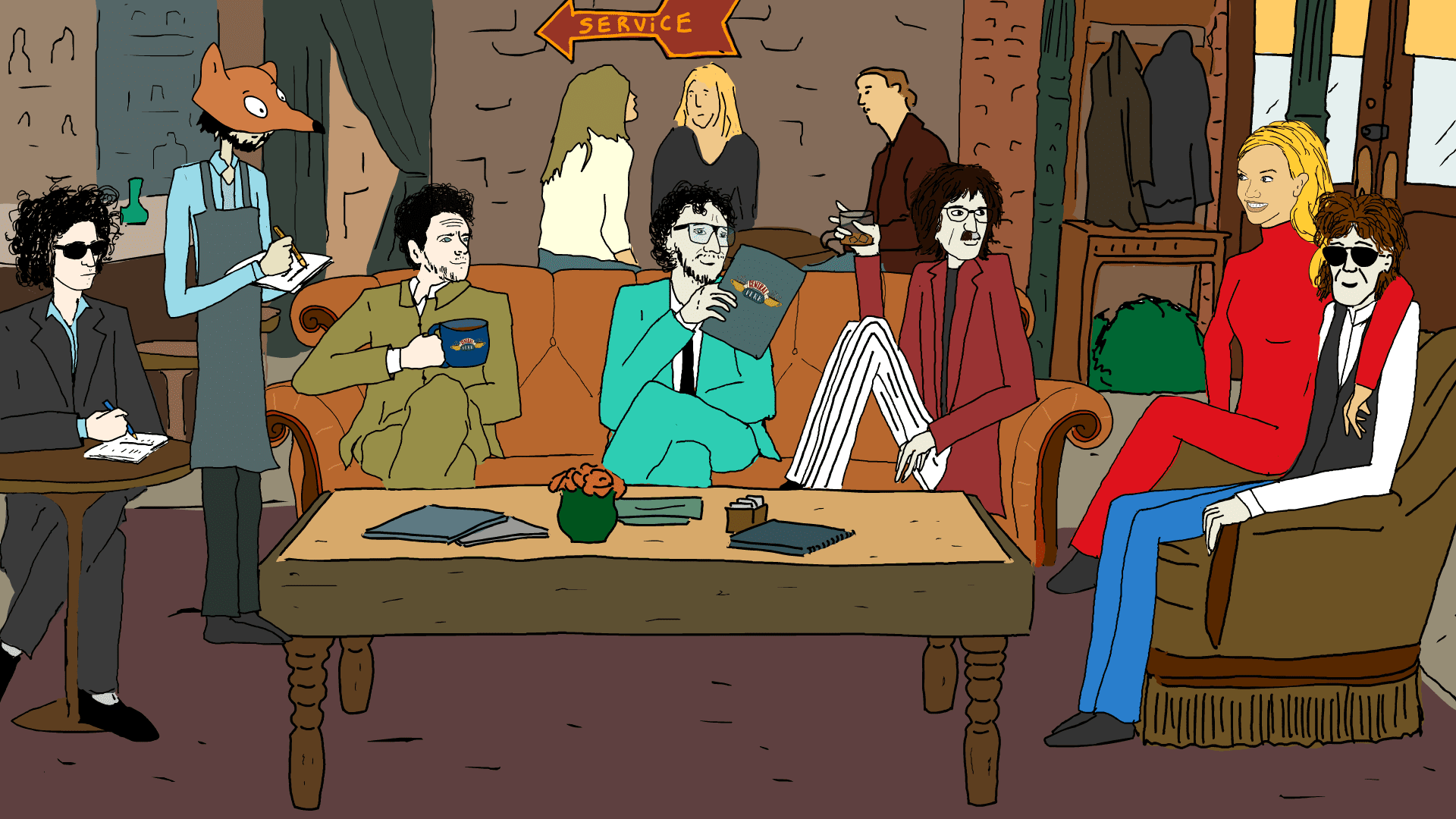History says that a group of enslaved people were brought to Ecuador to do forced labor on the Jesuit plantations. It was the 16th century and a wave of yellow fever had killed a large part of the conquered indigenous population that worked in them. Colonizers wanted new enslaved manpower for the coal mines, cotton plants, and sugarcane crops of Ecuador’s northern highlands.
History also says that a group of men and women escaped from a ship that sank off the coast of Ecuador and hid on the north coast, in Esmeraldas. There they founded the first maroon palenque and allied with indigenous peoples to defend themselves against the colonizers.
Cimarrona is the untamed spirit that escapes from the slavery camps looking for freedom and liberation for her people. The wild soul that fights against all forms of discrimination and racism to the diaspora. And Cimarrona is also the title that the photographer Johis Alarcón chose for her work, which was chosen in the AECID-Africamericanos call for audiovisual projects on Afro-descendant communities.
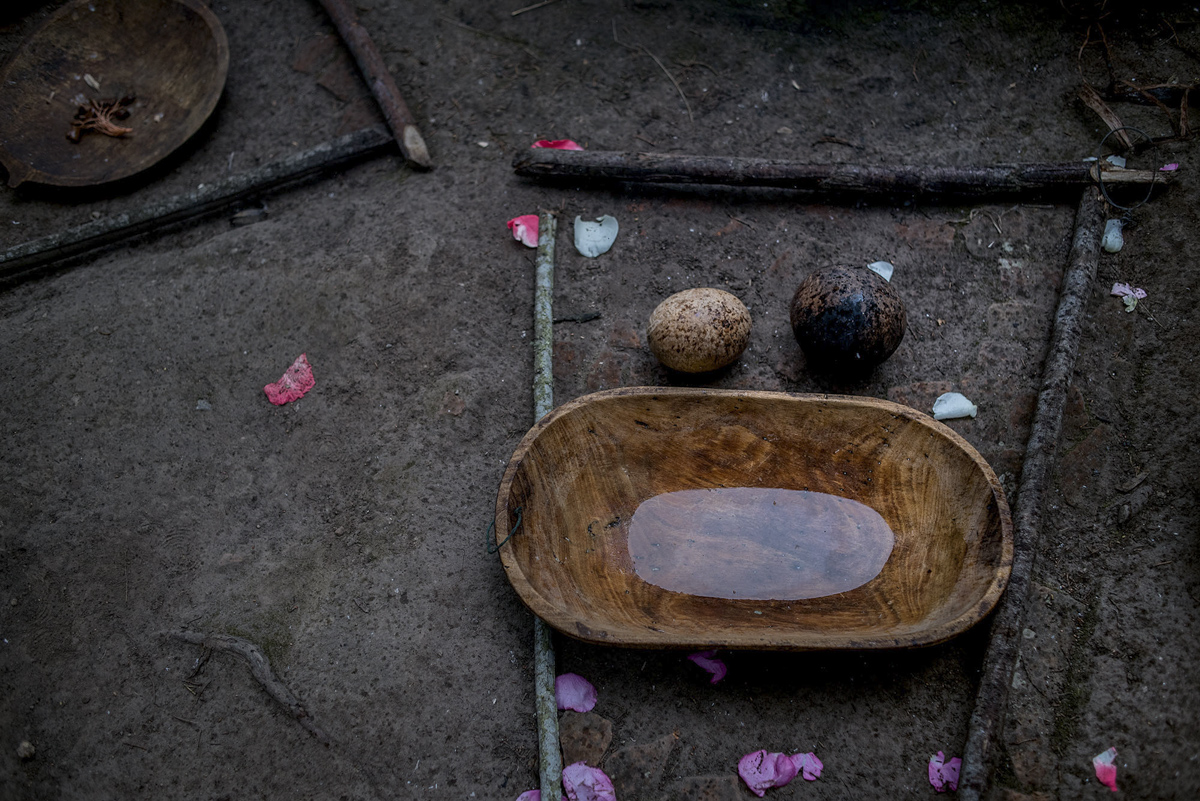
She, an Andean woman linked to Human Rights and gender issues, was looking for her own answers.
“I am a member of some projects that work with art for social transformation. I’m very connected and very interested in hip hop, I really like graffiti. In one of our meetings we talked about spiritualities and we said that hip hop is a spirituality. In fact, the rites and many variations that have occurred since the hip hop movement come from Africa.”
When they started digging, the question arose: where did all this come from? The first response was given by Karla Viteri, founder of Addis Abbeba, a pan-African activist group in Ecuador.
–You are very lucky –she said to Johis– because you grew up with your mother. I could never be with my mother Africa. My only way to stay connected to her is through my spirituality.
“Those words moved me,” says Johis. “At first I didn’t understand what it meant to ‘be with your mother.’ But when she told me, I understood that people of African descent were forced to leave their own land and could no longer return. Despite this exile and all the abuses they have suffered, they continue to resist,” says Alarcón.
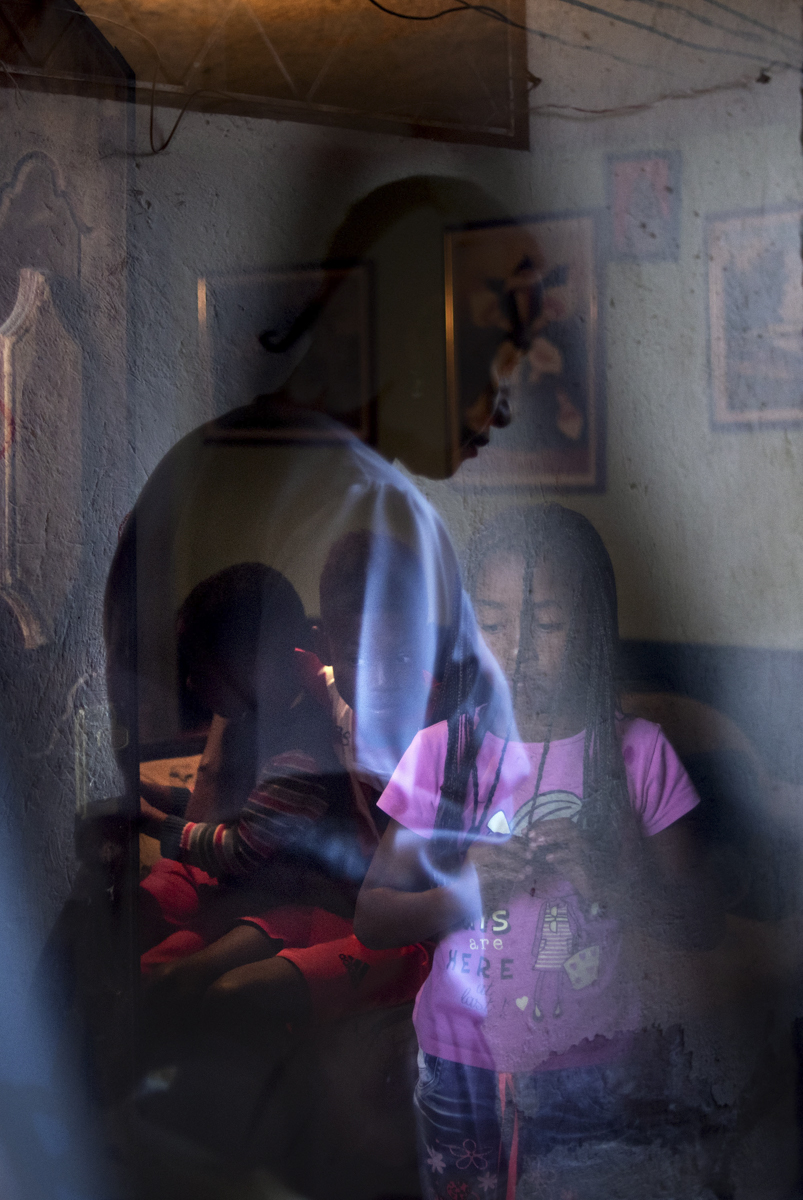
With this idea, she began to portray her friends, their mothers and grandmothers. On the faces, at the dances, when crossing rivers and witnessing celebrations and ceremonies, she was able to discover that the spirit of the maroons beat in these women of today, their descendants.
The tour began in the northwestern neighborhoods of Quito and continued in Esmeraldas and the Chota Ancestral Territory. Everywhere she found a certain “continuity of the slavery process”, in the extraction of natural resources in Afro-descendant territory, labor exploitation, discrimination and practices of racism, stigmatization, hypersexualization and violence present throughout the country, especially in the capital.
But she also discovered other continuities: the legacy of the Maroons, the free spirit and the strength they inspire to defend the territories and their culture are still alive in the daughters, granddaughters and great-granddaughters of black women who are recognized as guardians of the Diaspora’s cultural memory.
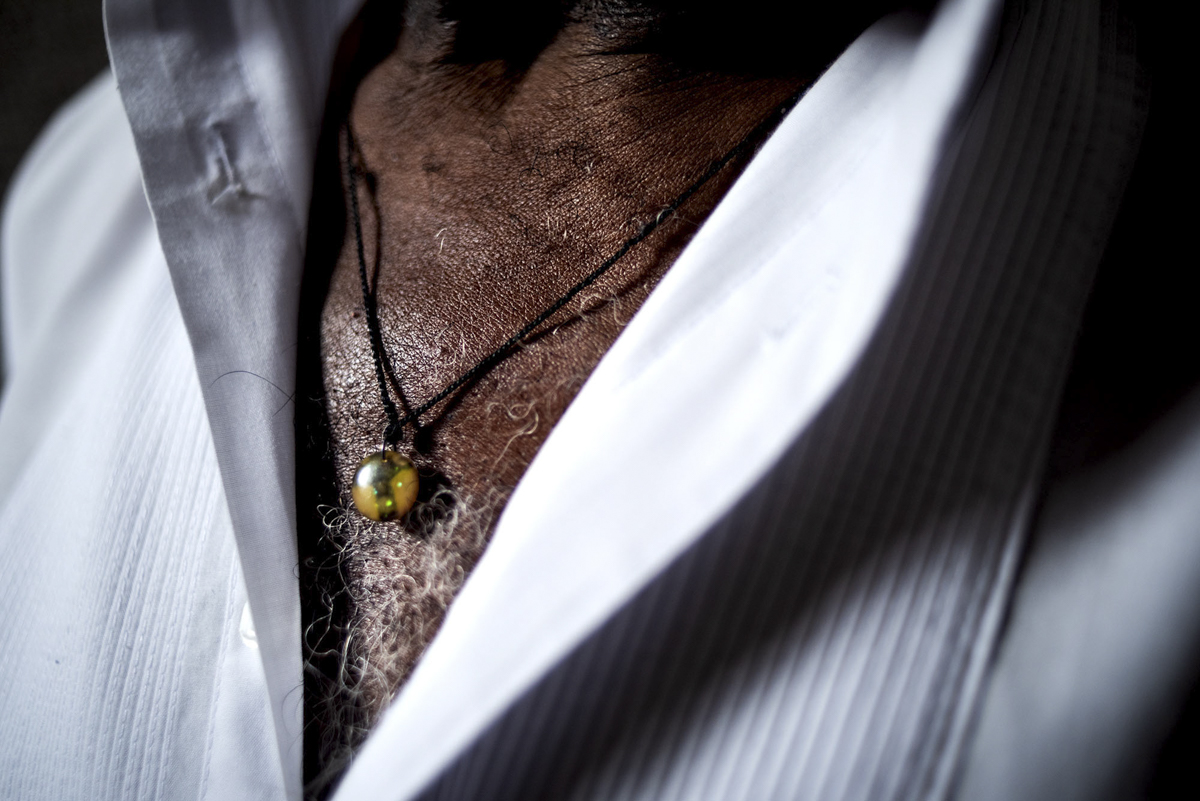
“Angela Davis says that the legacy of black women is a legacy of a new femininity,” Johis explains, “and that is something that I’m recognizing in this project, a new femininity, a strong woman but also a loving and supportive one. This is what changed this project in me. Also that femininity is my meeting point with other cultures and other beings ”.
An encounter that, she wishes, goes beyond our identities and particularities. “We always find something that separates us and I think there are more things that unite us, that allow us a space to meet, an opportunity to feel; those things can be found, or at least I would like them to be found, in my images.”
In the syncretism of current ancestral ceremonies, reflected in Cimarrona, she wants to make visible how they understand life, existence, how they live spirituality in daily life and in the family. A knowledge that is kept alive in the Afro-descendant people, although “intervened by colonial and postcolonial interests in the framework of inequality and growing racism.” Attempts to unite all of history, despite exile, inequalities and other unimaginable violence.
Afro-descendant women spoke to Johis about the maternal thread, an umbilical cord that connects them from the city to ancestral spirituality, to that resistance exerted from the palenques. In portraying them, Johis rethought her own roots, and her own spirituality. The Andean and the Afro embrace each other in their work, which is resistance and sweetness, cry and love.
